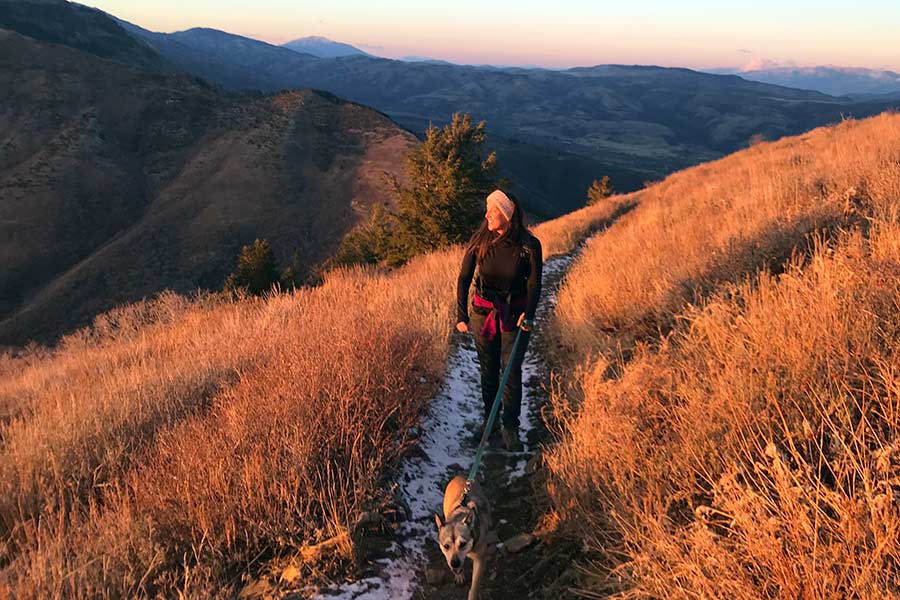What to do if a wild animal scratches or bites you or your pet
Salt Lake City — Due to some recent incidents with rabid wildlife, the Utah Division of Wildlife Resources and the Utah Department of Health want to remind the public what to do if you or your pet have contact with a wild animal.
While rabies in wildlife can be a concern, it is still fairly uncommon. Bats are the most common carrier of rabies in Utah, but it has also been confirmed in foxes and skunks. Other terrestrial carnivores, such as raccoons and coyotes, have been documented with rabies outside of Utah.
Since 2016 in Utah, there have been 59 instances of a person being exposed to a confirmed rabid animal, one of which resulted in a fatality (2018). In that same five-year timeframe, 37 pets have been exposed to rabid wildlife. Since 2016, 96 wild animals tested by the Utah Department of Health were positive for rabies — 94 of those were bats.
"On Labor Day, a pet dog in St. George was exposed to a wild fox, and we responded and captured the fox," DWR Wildlife Biologist Melinda Bennion said. "The fox later tested positive for rabies. And in another recent incident in St. George, a cat brought a bat into a house, and the bat also tested positive for rabies."
Symptoms of rabies in wildlife
Although some animals with rabies often look and act normal, most develop one of two forms of the disease.
"One form is 'furious rabies' in which the infected animal is easily excited or angered," Utah Department of Health Disease Epidemiologist Hannah Rettler said. "The other is 'dumb rabies' in which the infected animal becomes paralyzed. However, the only way to know for certain if an animal has rabies or another disease is to humanely euthanize the animal and have it tested."
Animals infected with rabies may have some of the following symptoms:
- Irritability
- Restlessness
- Nervousness
- Unusual behavior (i.e., animals that are usually nocturnal are active during the day or animals that usually fly may be on the ground)
What to do if you have had contact with a wild animal
- Immediately call local animal control or the nearest DWR office so officials can attempt to capture the animal for testing. Do not try to capture or trap the animal yourself. If the incident occurs after office hours or on a weekend, call the non-emergency number for your local police dispatch, who will then route the report to on-call DWR staff.
- If the animal is unable to be submitted for testing, it is presumed that you have been exposed to rabies.
- Immediately visit the Utah Department of Health website to find the nearest location to receive the rabies vaccine (post exposure prophylaxis).
- Contact your local health department with questions and to report the incident
"Once a person begins to show signs of the disease, there is no effective treatment, and rabies is almost always fatal," Rettler said. "That is why it is so important to work with your animal control officers, DWR officials and local health departments to determine if you need the rabies shot after an exposure. It is lifesaving treatment and the reason why human cases of rabies have decreased so dramatically in the last 100 years."
What to do if your pet is bitten, scratched or has had close contact with wildlife
- Immediately call local animal control or the nearest DWR office so officials can attempt to capture the wild animal for testing. If the incident occurs after office hours or on a weekend, call the non-emergency number for your local police dispatch, who will then route the report to on-call DWR staff.
- If the animal tests positive for rabies, next steps depend on the status of your pet's rabies vaccination. If the wild animal is unable to be submitted for testing, it is presumed the pet has been exposed to rabies.
- For the protection of you and the public, an unvaccinated dog, cat or ferret that has been bitten or scratched by a confirmed or suspected rabid animal will be euthanized immediately by a veterinarian or animal control officer.
- If you are unwilling to have your pet euthanized, the local health officer will order the animal to be held in strict isolation in a municipal or county animal shelter or a veterinary medical facility approved by the local health department for at least four months for dogs and cats, and six months for ferrets — at the owner's expense, per state code.
- If the pet is up to date on rabies vaccinations, it will require a 45-day home quarantine in partnership with local animal control.
"Having to euthanize an unvaccinated pet that was exposed to a rabid animal is one of the most heartbreaking parts of our jobs, so we strongly encourage everyone to keep their pets up to date on their rabies vaccinations," Rettler said.
Tips to prevent pets from interacting with wildlife
To avoid having your pets possibly exposed to rabies or other diseases, here are a few tips to help prevent your pet from interacting with wildlife:
- Bring your pet inside at night
- Close and lock your pet doors at night to prevent small wildlife from possibly entering
- Keep your pet on a leash when hiking or camping
"We really appreciate our partnerships with the local animal control, health departments and veterinarians across the state in these types of situations," Bennion said.

















